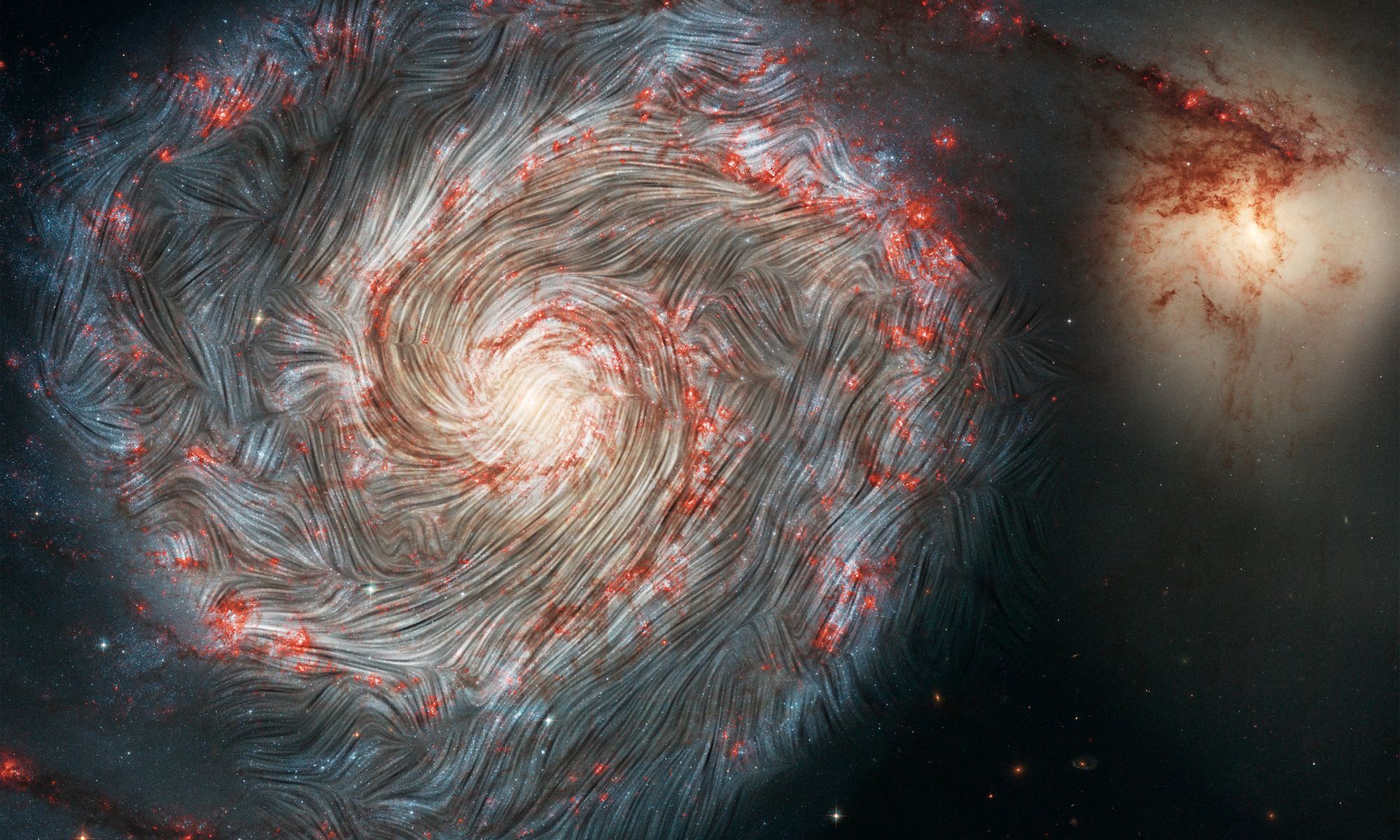Our galaxy is filled with magnetic fields. They come not just from stars and planets, but from dusty stellar nurseries and the diffuse hydrogen gas of interstellar space. We’ve long known of this galactic magnetic field, but mapping it in detail has posed a challenge. Now a new study gives us a detailed 3-dimensional map of these fields, with a few surprises.
Magnetic fields don’t emit light on their own, so we can’t simply scan the sky with optical telescopes to see where they are. Instead, we must look for ways in which magnetic fields cause charged particles to emit light, or how distant light is affected by interstellar gas within the magnetic field.
For objects such as stars and planets, we mostly map their magnetic fields by charged particles. Ions can become trapped by magnetic field lines, spiraling along them as they emit light. It’s how we first mapped the magnetic field of Jupiter, and how we can study the magnetic fields of the accretion disks of black holes. But galactic magnetic fields are much weaker and diffuse. While charged particles can spiral along galactic magnetic fields, the light they emit is often too faint for us to detect. So instead we use a trick of polarized light.
Polarized light is light where its waves oscillate in a particular direction, rather than randomly in various directions. It’s often used in things like polarized sunglasses, which filter out light scattered off shiny objects, and water, which helps to eliminate glare. There are lots of things in space that emit polarized light, such as pulsars and matter within accretion disks. Radio telescopes in particular can detect the polarization of this light, which gives astronomers more information than they’d otherwise have.
One of the properties of polarized light is that different frequencies move through ionized gas at slightly different speeds. This gives a beam of polarized light and effective rotation depending on how much ionized gas it travels through. Since ionized gas is caught by magnetic fields, we can map the magnetic fields by looking at the polarization of various light sources.

This has been done before, and it has given us a rough map of magnetic fields in our galaxy. What these studies found was that the magnetic fields of the Milky Way tend to fall uniformly along the disk shape of the galaxy. This new study took this one step further. Using data from the Gaia spacecraft, the team had a detailed map of the distribution of stars and nebulae in the local region of our galaxy. They then combined this with polarization observations of the Sagittarius spiral arm. Together this gave them a detailed 3-dimensional magnetic field map of the region.
They found that the magnetic fields aren’t uniform, and don’t simply lie along the galactic plane. Even within the diffuse regions of interstellar space galactic magnetic fields can take complex forms. Many of their field lines diverge significantly from the galactic plane. They also found that these galactic magnetic fields can strongly interact with stellar nurseries, penetrating them and affecting the motion of gas and dust. This could explain how some stellar nurseries have regions of star formation that could not have formed from gravity alone.
As we capture a more detailed view of magnetic fields, we will better understand how they interact with the galaxy as a whole. They not only affect the formation of new stars but could impact the structure of galaxies and how they evolve over time.
Reference: Doi, Yasuo, et al. “Tomographic Imaging of the Sagittarius Spiral Arm’s Magnetic Field Structure.” The Astrophysical Journal 961.1 (2024): 13.

